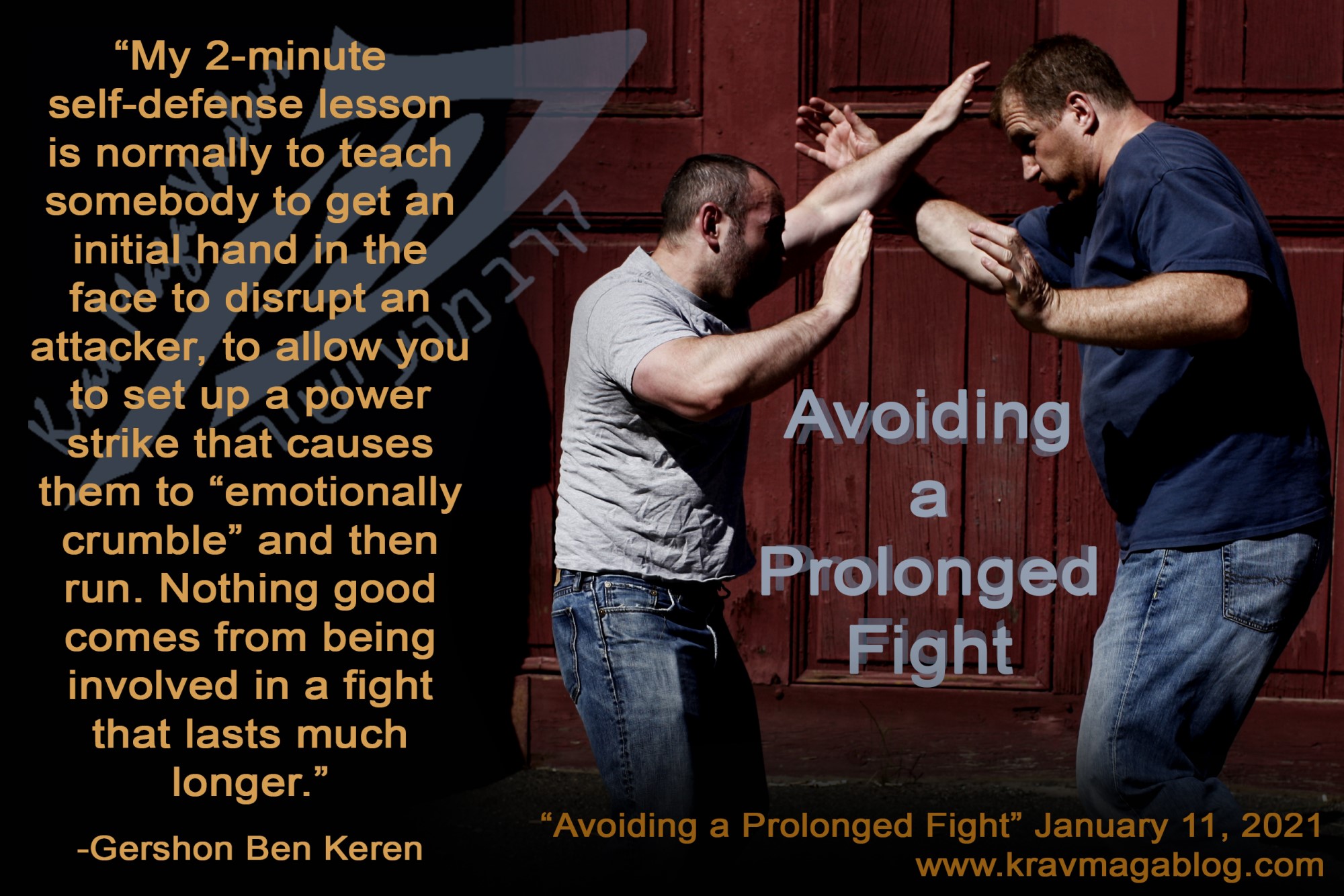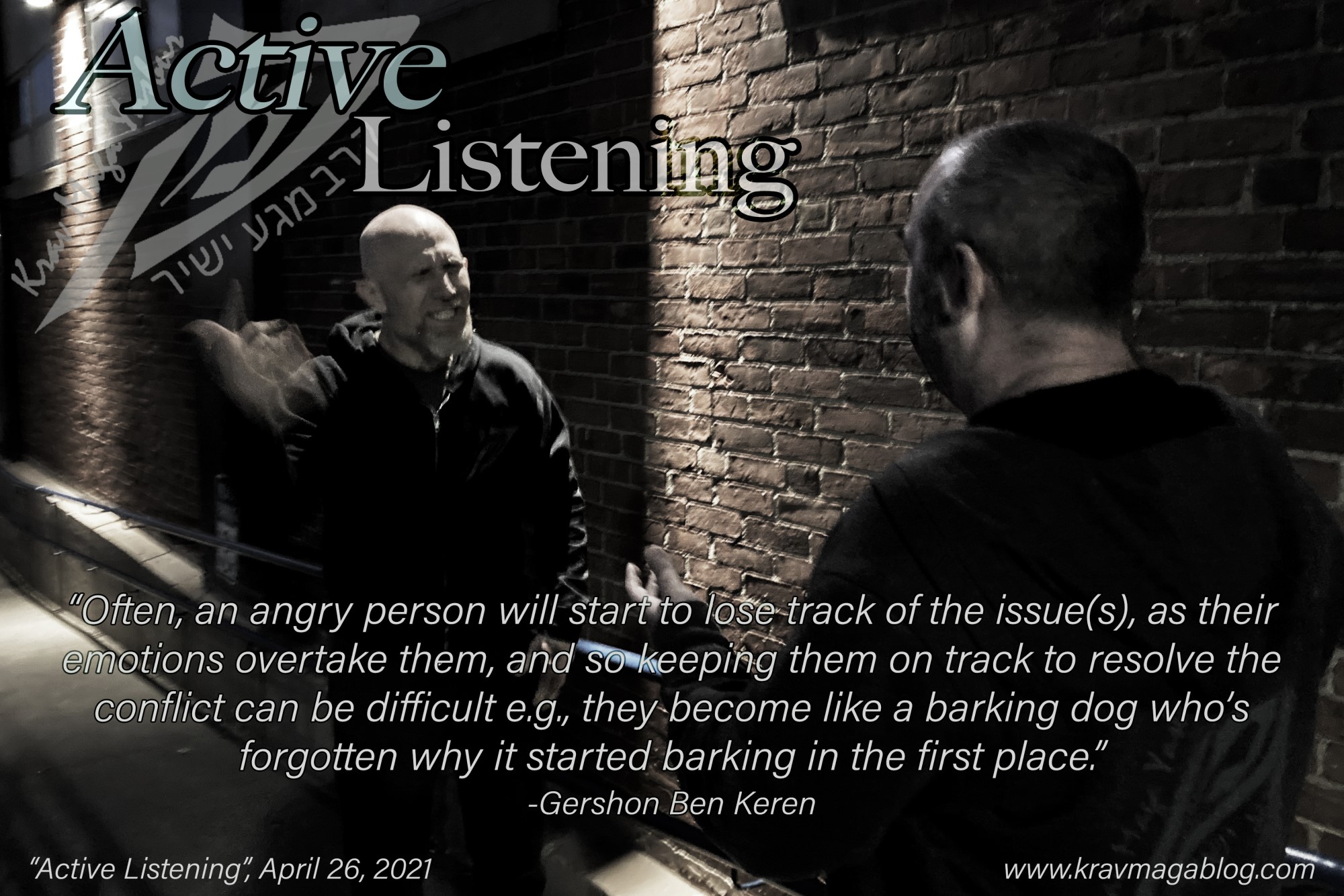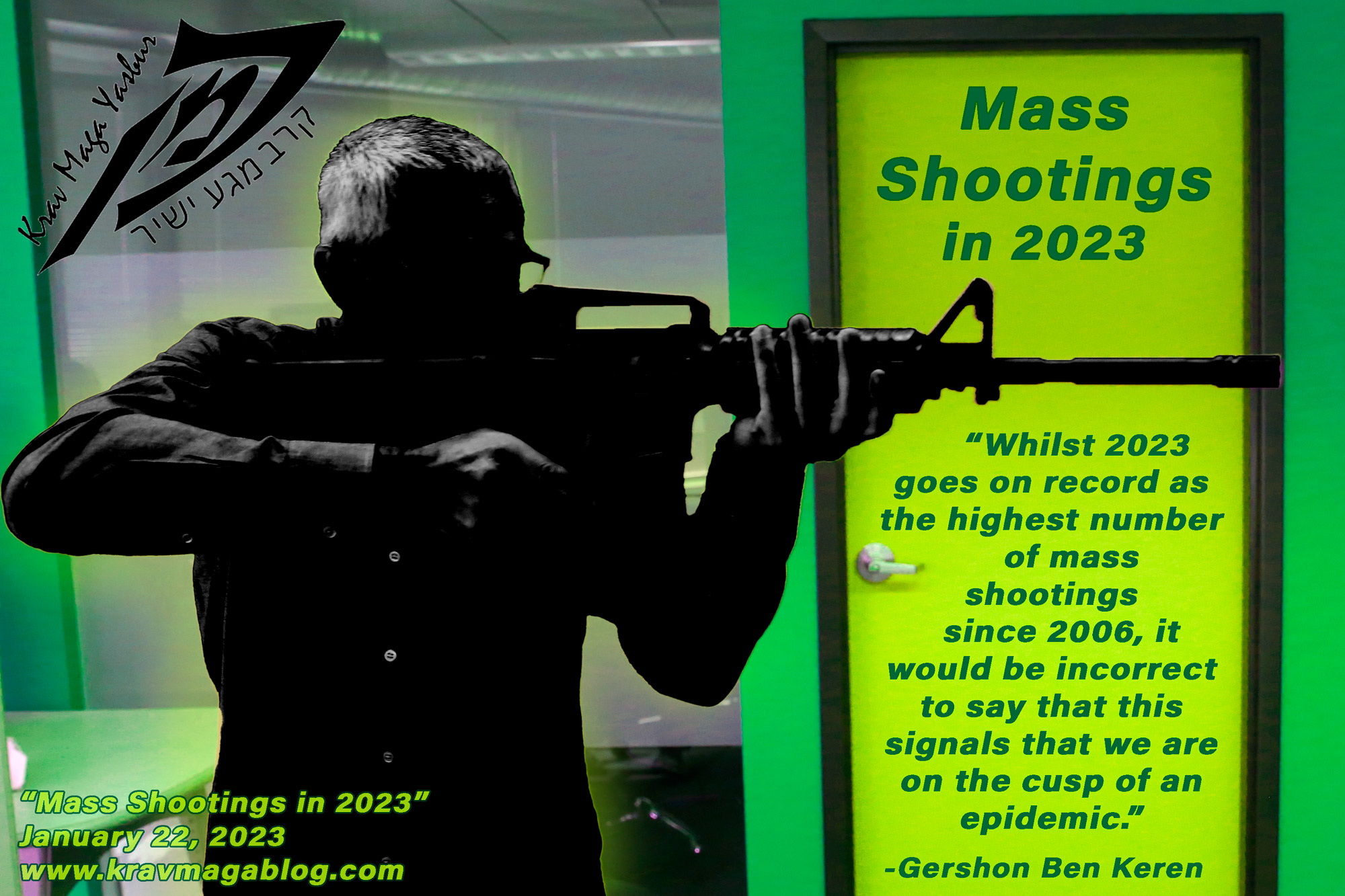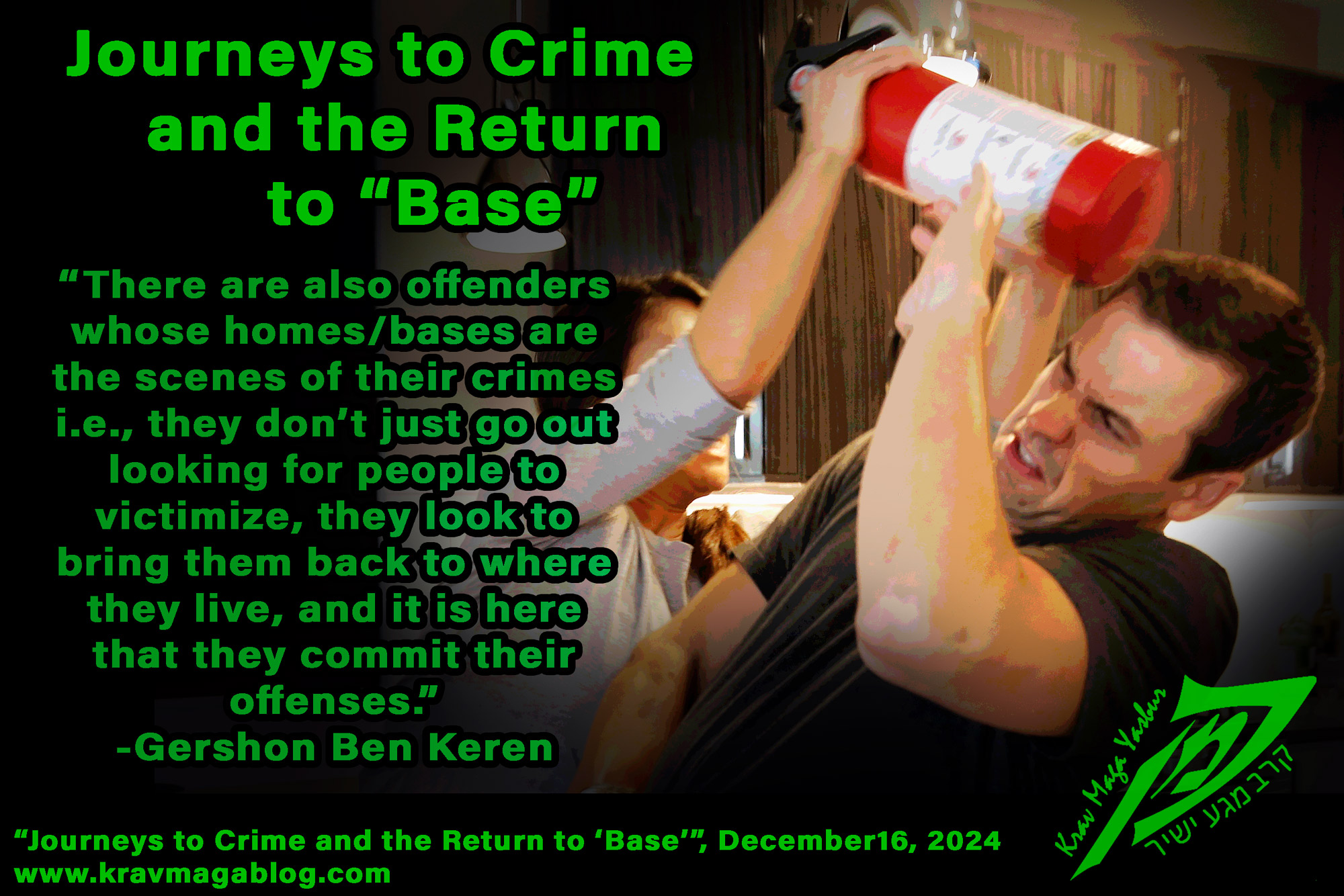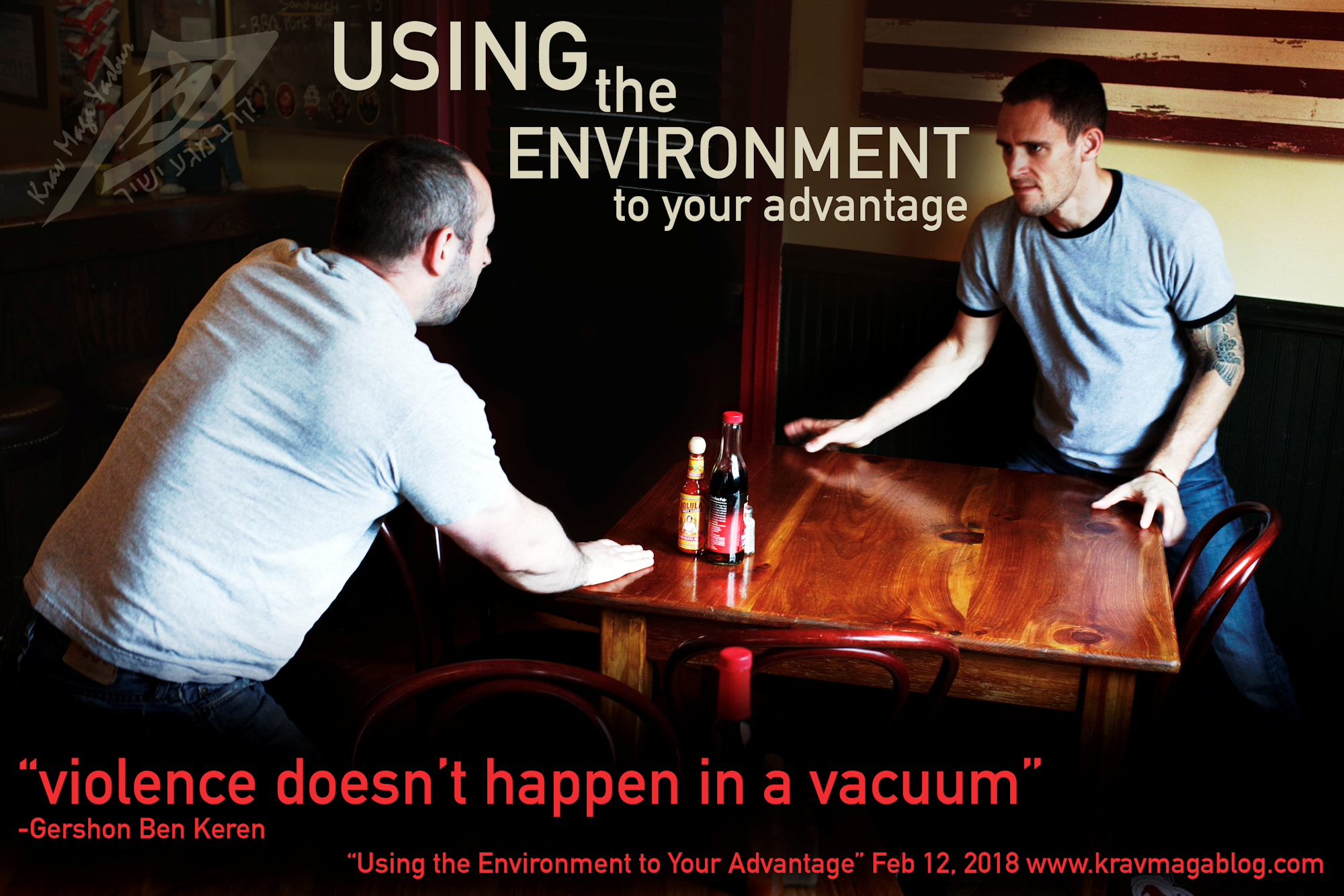Using The Environment To Your Advantage, is an article written by Gershon Ben Keren, a 5th Degree Black Belt in Krav Maga, who teaches Krav Maga in Boston, MA. He has also authored three Amazon best-Selling Books on Krav Maga.
A line that I use a lot when talking about real-life conflicts is, “violence doesn’t happen in a vacuum”. This is something that can easily get forgotten or lost in the training environment, where you might be practicing techniques and solutions in an open and unobstructed mat space e.g. will you have the space in a real-life confrontation to perform an armbar, or guard sweep, that works well in an open mat space? That’s not to say that such techniques aren’t appropriate or don’t have value, just that we need to understand the contexts in which such techniques and approaches will work, and when and where they won’t. It would be nice to think that all techniques and solutions are universally applicable to all situations, however this is not always the case, and one factor that can affect the appropriateness of a particular technique is the environment – have you room and space to perform it? Is the surface you are on level enough to allow you to perform it? etc. Whilst the environment can restrict and limit our options, it can also create and present “new” solutions to us, such as providing us with improvised weapons that we can use to help increase/up our survival options. However, we can also use it in other ways; by putting ourselves in a position which restricts our assailant’s movement, or using objects as barriers and obstacles to slow down/prevent and attacker’s access to us etc.
One of the issues that we often face when dealing with social/spontaneous aggression, is that when do we draw a line, and make it clear to the other party that we regard the situation as a conflict; this may escalate it into a violent altercation. In the initial phases of a dispute or disagreement with somebody, the other person’s emotional state might be “edgy”, rather than overtly aggressive. This would not be the time to shout, “Get Back!” and adopt any semblance of a fighting stance; as this would simply escalate the situation and take it in a direction, that it probably didn’t need taking, however at the same time we may want to do something discrete, that starts setting things in our favor, should it go physical. Many years ago, I was drinking in a pub with some friends, at a table, when a drunk man bumped into me, and spilt some of a drink he was carrying – I was seated and stationary at the time. Immediately, he became aggressive and started to blame me for knocking into him. In any situation where you are seated, and something like this happens, you need to stand up; one, it puts you in a better position should things go physical, and two, it prevents the other person from dominating you, by standing over you (if they’re able to do this, they may conclude/convince themselves that they have a greater ability than you to act physically). I stand at 5’6”, so I’m not a physically imposing individual, and anything I can use as an “equalizer” I’ll take. As I stood up, I turned the chair I was sitting on, so that the seat was pretty much level with my aggressor’s knees – I held on to the back and rooted it to that spot. If they wanted to throw a punch, or try and make a grab at me, they’d have to do it over the chair. From this position, I was able to look fairly casual – as if I was having a normal conversation – as I went through my de-escalation process. The chair was not a substantial barrier, but it would have hampered their ability to make an attack, and in some cases, this is all that it is needed for an aggressor to question their ability, especially if their strategy relies solely on getting in the “cheap shot”. Of course, if things had kicked off, the chair could have been picked up and used as an improvised weapon.
Moving furniture, such as tables and chairs, to impede an attacker’s advance towards you, and help create the time to make your disengagement is a good and productive use of your environment. Often, when we are looking for self-defense/self-protection solutions, we are looking for the “silver bullet”, that will deal with everything, and solve the problem we are facing: we want one simple thing to do, that will make everything right. Most real-life situations, are solved bit-by-bit, by doing several things, which may not be significant on their own, when added up, create the solution. Stepping back, and pulling chairs and other objects in front of you, as you disengage is not going to stop your attacker indefinitely i.e. they can move these objects out of the way, just as you were able to move them into their path etc. but it will give you a millisecond here and a millisecond there, which when added together, can help facilitate your escape.
In Active Shooter/Killer scenarios one solution, which may be available to you (and suitable to your situation), is to to barricade yourself in a room, piling tables, chairs, and other pieces of furniture up against the door. Will such a barricade ultimately, prevent a shooter from getting to you? Maybe not, but most will be unwilling to spend the time trying, when there are probably easier and more vulnerable targets to be had. Active Killers, are on the clock to kill as many people as they can, in the shortest possible time (before those who are capable of stopping them enter the scene), with the goal of exceeding the number of fatalities achieved by prior shooters. When students in room 205 of Norris Hall barricaded the door against the Virginia Tech Shooter, Seung-Hui Cho, preventing him access, he eventually gave up trying to break the door down, and went looking for easier targets. This strategy was replicated by students at UCLA in 2016, to prevent active killer, Mainak Sarkar - a disgruntled PHD student - from gaining access to them. These are not isolated incidents, neither did they involve “trained” and “informed” individuals. These were persons who saw the importance of using that which was in their environment to increase their survival chances.
I’ll often describe myself when I provide corporate services as a “Professional Coward” – it’s the job description I use. Although at first glance it may just appear a self-deprecatory remark, it actively describes who I am, what I do, and what I teach. All violence comes at a cost to those involved, even if at the end of the event you deem yourself to be the successful party. If there is a chance to disengage, take it. If you can slow things down to facilitate your disengagement, do so. I have learnt over the years that few violent situations can be dealt with in one go, and that most have several stages and phases that you must work through – even if this involves setting things up to make a “conclusive” strike (which in reality is rarely conclusive) or disengaging at the earliest opportunity. Knowing how to use the environment to increase your chances is a key survival skill.
0 COMMENTS

